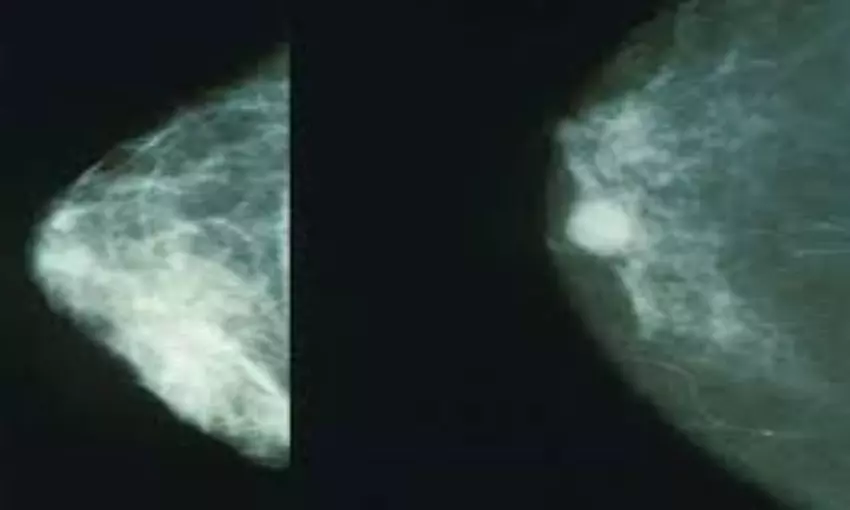- Home
- Medical news & Guidelines
- Anesthesiology
- Cardiology and CTVS
- Critical Care
- Dentistry
- Dermatology
- Diabetes and Endocrinology
- ENT
- Gastroenterology
- Medicine
- Nephrology
- Neurology
- Obstretics-Gynaecology
- Oncology
- Ophthalmology
- Orthopaedics
- Pediatrics-Neonatology
- Psychiatry
- Pulmonology
- Radiology
- Surgery
- Urology
- Laboratory Medicine
- Diet
- Nursing
- Paramedical
- Physiotherapy
- Health news
- Fact Check
- Bone Health Fact Check
- Brain Health Fact Check
- Cancer Related Fact Check
- Child Care Fact Check
- Dental and oral health fact check
- Diabetes and metabolic health fact check
- Diet and Nutrition Fact Check
- Eye and ENT Care Fact Check
- Fitness fact check
- Gut health fact check
- Heart health fact check
- Kidney health fact check
- Medical education fact check
- Men's health fact check
- Respiratory fact check
- Skin and hair care fact check
- Vaccine and Immunization fact check
- Women's health fact check
- AYUSH
- State News
- Andaman and Nicobar Islands
- Andhra Pradesh
- Arunachal Pradesh
- Assam
- Bihar
- Chandigarh
- Chattisgarh
- Dadra and Nagar Haveli
- Daman and Diu
- Delhi
- Goa
- Gujarat
- Haryana
- Himachal Pradesh
- Jammu & Kashmir
- Jharkhand
- Karnataka
- Kerala
- Ladakh
- Lakshadweep
- Madhya Pradesh
- Maharashtra
- Manipur
- Meghalaya
- Mizoram
- Nagaland
- Odisha
- Puducherry
- Punjab
- Rajasthan
- Sikkim
- Tamil Nadu
- Telangana
- Tripura
- Uttar Pradesh
- Uttrakhand
- West Bengal
- Medical Education
- Industry
Breast density and family history of cancer, Are they related?

Family history of breast cancer(FHBC) has been shown to be positively associated with mammographic breast density in premenopausal women, a new study has found. The study has been published in the Jama network.
Women with a positive FHBC in a first-degree relative (mother, sister) have a 2 to 4 fold increased risk of breast cancer. A dense breast on a mammogram is also associated with an increased risk of breast cancer.
 Also Read:MRI may lower breast cancer deaths from variants in 3 genes
Also Read:MRI may lower breast cancer deaths from variants in 3 genes
The study population included 2 groups of women recruited at the Joanne Knight Breast Health Center (BHC) at Washington University School of Medicine and Siteman Cancer Center. The discovery set consisted of 383 premenopausal women recruited during routine screening mammograms in 2016. The validation set consisted of 14040 premenopausal women recruited while undergoing screening and diagnostic mammograms between June 2010 and December 2015.
The primary outcomes were mammographic breast density measured quantitatively as volumetric percent density using Volpara (discovery set) and qualitatively using BI-RADS (Breast Imaging Reporting and Data System) breast density (validation set).
Out Of 14 415 premenopausal women included in this retrospective cohort study, the discovery set and validation set had similar characteristics (discovery set with FHBC: mean [SD] age, 47.1 [5.6] years; 15 [17.2%] were Black or African American women and 64 [73.6%] were non-Hispanic White women; discovery set with no FHBC: mean [SD] age, 47.7 [4.5] years; 87 [31.6%] were Black or African American women and 178 [64.7%] were non-Hispanic White women; validation set with FHBC: mean [SD] age, 46.8 [7.3] years; 720 [33.4%] were Black or African American women and 1378 [64.0%] were non-Hispanic White women]; validation set with no FHBC: mean [SD] age, 47.5 [6.1] years; 4572 [38.5%] were Black or African American women and 6632 [55.8%] were non-Hispanic White women]). In the discovery set, participants who had FHBC were more likely to have a higher mean volumetric percent density compared with participants with no FHBC (11.1% vs 9.0%). In the multivariable-adjusted model, volumetric percent density was 25% higher (odds ratio [OR], 1.25; 95% CI, 1.12-1.41) in women with FHBC compared with women without FHBC; and 24% higher (OR, 1.24; 95% CI, 1.10-1.40) in women who had 1 affected relative, but not significantly higher in women who had at least 2 affected relatives (OR, 1.40; 95% CI, 0.95-2.07) compared with women with no relatives affected. In the validation set, women with a positive FHBC were more likely to have dense breasts (BI-RADS 3-4) compared with women with no FHBC (BI-RADS 3: 41.1% vs 38.8%; BI-RADS 4: 10.5% vs 7.7%). In the multivariable-adjusted model, the odds of having dense breasts (BI-RADS 3-4) were 30% higher (OR, 1.30; 95% CI, 1.17-1.45) in women with FHBC compared with women without FHBC; and 29% higher (OR, 1.29; 95% CI, 1.14-1.45) in women who had 1 affected relative, but not significantly higher in women who had at least 2 affected relatives (OR, 1.38; 95% CI, 0.85-2.23) compared with women with no relatives affected.
In this cohort study of 14415 premenopausal women, volumetric percent density was significantly higher in women with FHBC compared with women without FHBC, and the odds of having dense breasts were significantly higher in women with FHBC compared with women without FHBC.
MBBS
She is passionate about writing and loves to read, analyses and write informative medical content for readers. She can be contacted at editorial@medicaldialogues.in. Contact no. 011-43720751
Dr Kamal Kant Kohli-MBBS, DTCD- a chest specialist with more than 30 years of practice and a flair for writing clinical articles, Dr Kamal Kant Kohli joined Medical Dialogues as a Chief Editor of Medical News. Besides writing articles, as an editor, he proofreads and verifies all the medical content published on Medical Dialogues including those coming from journals, studies,medical conferences,guidelines etc. Email: drkohli@medicaldialogues.in. Contact no. 011-43720751



